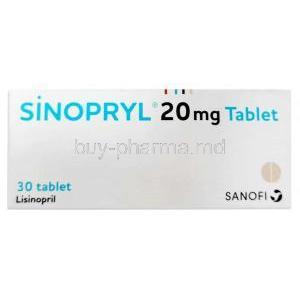Prazosin hydrochloride
- I. Introduction
- II. Composition and Characteristics
- III. Mechanism of Action: How Prazosin Works
- IV. Therapeutic Uses of Prazosin Hydrochloride
- V. Off-Label Uses of Prazosin
- VI. Dosage and Administration Guidelines
- VII. Side Effects of Prazosin
- VIII. Important Precautions and Warnings
- IX. Special Considerations in Patient Populations
- X. Drug Interactions with Prazosin Hydrochloride
- XI. Overdose and Management
- XII. Storage and Handling Precautions
I. Introduction
Overview of Prazosin Hydrochloride
Prazosin Hydrochloride, an alpha blocker, is frequently prescribed to manage high blood pressure and relieve symptoms of an enlarged prostate. It works by relaxing blood vessels, allowing blood to flow smoothly and reducing blood pressure levels.
Brief History of Its Development and Approval
In the 1970s, Prazosin Hydrochloride emerged as a groundbreaking development in cardiovascular medicine. Its rapid approval by the FDA was attributed to its effectiveness, leading to its incorporation into various treatment protocols worldwide.
II. Composition and Characteristics
Chemical Structure and Properties
Prazosin Hydrochloride stands out due to its chemical makeup, which combines a quinazoline core with a furan ring. This specific combination is crucial for its ability to block alpha receptors effectively.

Formulations Available on the Market
- Capsules (1 mg, 2 mg, 5 mg)
- Tablets
III. Mechanism of Action: How Prazosin Works
Pharmacodynamics: Interaction with Alpha-adrenergic Receptors
Prazosin mainly works by blocking alpha-1 receptors, which significantly control blood pressure and vascular tone.
Impact on the Cardiovascular System
Prazosin plays a role in reducing vascular resistance and venous return, which ultimately helps to ease the workload on the heart and lower arterial pressure, making it a valuable asset for managing heart health.
IV. Therapeutic Uses of Prazosin Hydrochloride
-
Hypertension (High Blood Pressure):
- Prazosin is primarily used to treat hypertension.
- By lowering blood pressure, it reduces the risk of fatal and nonfatal cardiovascular events, including strokes and myocardial infarctions 12.
-
Enlargement of the Prostate Gland (Benign Prostatic Hyperplasia, BPH):
-
Heart Failure:
- Prazosin is used in the management of congestive heart failure.
- The initial dose is typically 0.5 mg, gradually increasing to 4 mg or more based on the patient’s response 1.
V. Off-Label Uses of Prazosin
Management of PTSD and Nightmares
-
Raynaud’s Phenomenon:
- Prazosin has been used off-label to manage Raynaud’s phenomenon.
- It helps by relaxing smooth muscles and improving blood flow, which can alleviate symptoms related to vasospasm in the fingers and toes 12.
-
PTSD-Related Nightmares and Sleep Disruption:
- Prazosin is prescribed off-label to treat severe nightmares and other sleep disturbances related to post-traumatic stress disorder (PTSD).
- It appears to block the production of norepinephrine, a chemical that triggers the body’s “fight or flight” response, without interfering with blood pressure 32.
VI. Dosage and Administration Guidelines
Standard Dosage for Hypertension
A common initial dosage for treating hypertension is usually 1 mg, taken two to three times daily with the possibility of adjustments depending on how the treatment works and how well the patient can handle it.
Adjustments for Other Conditions
Tips for Effective Administration
- Administer at the same time each day to maintain consistent blood levels.
- Avoid abrupt discontinuation to prevent rebound hypertension.
VII. Side Effects of Prazosin
Overview of Common Side Effects
While most people can handle it well, a few patients might feel dizzy, get headaches, or feel drowsy, especially when starting treatment.
Serious Adverse Reactions and Risks
In some instances, individuals might experience low blood pressure or fainting, particularly following the initial dosage, a situation referred to as the "first dose phenomenon."
VIII. Important Precautions and Warnings
Contraindications for Use
Patients known to have a sensitivity to quinazolines, should avoid using Prazosin, highlighting the importance of evaluations before starting treatment.
Conditions Requiring Careful Administration
When giving Prazosin to patients with heart issues, kidney problems, or those using vasodilators at the same time, it's important to be extra careful.
IX. Special Considerations in Patient Populations
Administration to the Elderly: Adjustments and Cautions
Prazosin Hydrochloride is effective. It should be used carefully in older individuals because they are more sensitive to its blood pressure-lowering effects. Starting treatment with the lowest dose possible is crucial, and it's important to watch for signs of low blood pressure, like feeling lightheaded or faint, as these could result in falls and injuries. It's advisable to make changes based on how the patient responds and tolerates the medication to reduce the risk of side effects.
Use in Pregnant Women and Nursing Mothers: Safety Profile
Throughout pregnancy and breastfeeding, it is recommended to use Prazosin only if the advantages surpass the risks. Due to the information available regarding its impact on pregnancy, it should be utilized under close medical monitoring. Nursing mothers should be cautious as Prazosin is present in breast milk and could impact the newborn.
Guidelines for Administration to Children
The safety and effectiveness of Prazosin in children have not been confirmed yet. Hence, when considering its use in kids, a thorough evaluation of risks and benefits is crucial, along with medical monitoring. If doses are recommended, they should be adjusted accurately based on the child's weight and monitored for any potential negative effects.
X. Drug Interactions with Prazosin Hydrochloride
Common and Significant Interactions
Prazosin Hydrochloride may interact with medications, which could change how well it works or worsen its side effects. It's important to be careful when using it alongside drugs for high blood pressure, as it could cause a significant drop in blood pressure. It's also recommended to use caution when combining it with inhibitors, as this might lead to noticeable low blood pressure symptoms.
Interactions with Over-the-counter Medications and Supplements
- Non-steroidal anti-inflammatory medications (NSAIDs) could potentially lessen the blood pressure-lowering effects of Prazosin.
- Additionally, natural remedies such as St. John's wort might decrease its effectiveness by stimulating liver enzymes that play a role in drug breakdown.
XI. Overdose and Management
Symptoms of Overdose
Taking too much Prazosin can cause a serious drop in blood pressure, dizziness, and even fainting. In situations breathing problems and passing out may happen, requiring urgent medical help.
Immediate Actions and Antidote Information
In case of an overdose, the initial action is to stabilize the patient's heart condition. Care such as administering fluids and positioning the patient correctly is crucial to maintaining proper blood flow to the brain. Although there is no antidote for Prazosin overdose, vasopressors can be used to improve vascular function and blood pressure levels.
XII. Storage and Handling Precautions
Optimal Storage Conditions
To ensure that Prazosin remains effective and lasts longer, it is recommended to store it at room temperature in a cool place away from sunlight. Additionally, it's important to store this medication out of children's reach to avoid consumption.

Handling Guidelines to Ensure Safety and Efficacy
- When dealing with Prazosin, it's important to follow safety procedures in pharmacology. Make sure the packaging is intact to avoid contamination.
- Properly dispose of any unused medication to prevent misuse.
- By sticking to storage and handling guidelines, we can ensure that Prazosin retains its therapeutic benefits and continues to be an effective treatment for both approved and off-label purposes.


















